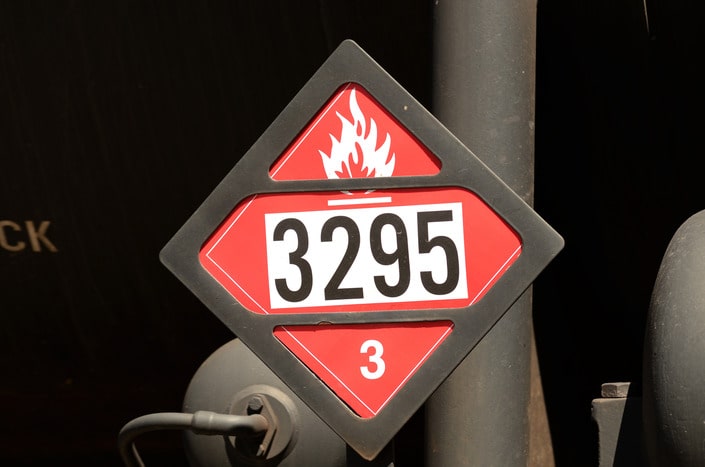
- July 17, 2023
- |security guard company
- | 0
Mitigating Risks and Ensuring Safety –
As a trusted fire watch guard company, XPressGuards recognizes the importance of hazardous materials handling and storage awareness for fire watch guards. Hazardous materials pose significant risks, including fire hazards, toxic exposures, and environmental damage. Fire watch guards play a critical role in identifying, monitoring, and mitigating these risks to ensure the safety of individuals and property. In this article, we will explore the key aspects of hazardous materials handling and storage awareness for fire watch guards, including risk assessment, preventive measures, emergency response protocols, and ongoing training.
Understanding Hazardous Materials
Fire watch guards must have a comprehensive understanding of hazardous materials and their classifications. Hazardous materials can include flammable liquids, gases, explosives, corrosives, and toxic substances. It is essential for fire watch guards to be familiar with the various classes and categories of hazardous materials, as well as their associated risks and safety precautions.
Risk Assessments
Effective hazardous materials handling and storage awareness begins with a thorough risk assessment. Fire watch guards work closely with facility managers, safety officers, and other relevant personnel to identify and evaluate potential hazards. Risk assessments include factors such as the type and quantity of hazardous materials present, storage conditions, compatibility issues, ventilation systems, emergency response capabilities, and compliance with safety regulations.
Preventive Measures
Preventive measures are crucial to minimize risks associated with hazardous materials handling and storage. Fire watch guards assist in implementing a range of measures, including:
– Proper storage and labeling: Fire watch guards ensure that hazardous materials are stored in appropriate containers, labeled correctly, and stored in designated areas. They enforce proper segregation and provide guidance on compatibility to prevent chemical reactions.
– Safe handling procedures: Fire watch guards educate personnel on safe handling procedures for hazardous materials, including the use of personal protective equipment (PPE), proper techniques for transferring and dispensing substances, and precautions to avoid spills or leaks.
– Ventilation and control systems: Fire watch guards verify the functionality of ventilation systems, ensuring that they effectively control and remove hazardous vapors or fumes. They also monitor control systems, such as exhaust fans or ventilation hoods, to ensure proper operation.
– Fire protection measures: Fire watch guards collaborate with facility managers to ensure the availability and proper functioning of fire protection systems, such as fire alarms, sprinklers, fire extinguishers, and fire suppression systems. They ensure that these systems are appropriate for the specific hazards associated with the stored materials.
– Emergency response equipment: Fire watch guards verify the availability and accessibility of emergency response equipment, such as spill kits, chemical neutralizers, and personal protective equipment. They ensure that personnel are trained in the proper use of this equipment and know how to respond to spills or releases.
Emergency Response
Comprehensive emergency response protocols are essential for effectively managing incidents involving hazardous materials. Fire watch guards collaborate with facility managers, safety officers, and emergency responders to develop and document emergency response protocols. These protocols typically include:
– Alarm systems and communication: Fire watch guards ensure that alarm systems, including gas detection systems and emergency communication systems, are properly installed, tested, and maintained. They establish effective communication channels to promptly alert personnel and emergency responders during hazardous material incidents.
– Evacuation and shelter-in-place procedures: Fire watch guards assist in developing evacuation plans and shelter-in-place procedures specific to hazardous material incidents. These plans outline primary and secondary escape routes, assembly areas, and procedures for accounting for personnel during evacuations.
– Decontamination procedures: Fire watch guards ensure that decontamination procedures are in place and personnel are trained to respond in case of exposure to hazardous materials. They collaborate with emergency responders to establish decontamination protocols and designated areas.
– Collaboration with emergency responders: Fire watch guards establish protocols for collaborating with local emergency responders, such as hazardous materials response teams. This includes providing critical information about the type and quantity of hazardous materials, their location, and any specific hazards that responders should be aware of.
Training and Education
Continuous training and education are essential to maintain awareness and proficiency in hazardous materials handling and storage. Fire watch guards assist in conducting regular training sessions that cover topics such as:
– Hazard identification and classification: Fire watch guards educate personnel on the identification and classification of hazardous materials, including understanding safety data sheets (SDS) and labels.
– Proper use of personal protective equipment: Fire watch guards provide training on the selection, use, and maintenance of personal protective equipment (PPE) appropriate for handling hazardous materials.
– Spill response and containment: Fire watch guards train personnel on spill response and containment techniques, emphasizing the importance of prompt action to minimize the spread of hazardous substances and prevent environmental contamination.
– Emergency shutdown procedures: Fire watch guards ensure that personnel are trained in emergency shutdown procedures for equipment or processes involving hazardous materials. They emphasize the importance of isolating fuel sources or shutting down processes to prevent further hazards during emergencies.
Improvement and Evaluation
Hazardous materials handling and storage protocols should be subject to continuous evaluation and improvement. Fire watch guards collaborate with facility managers, safety officers, and personnel to review incident reports, conduct post-incident evaluations, and identify areas for enhancement. This may involve updating procedures, addressing recurring issues, or implementing new technologies or practices to enhance safety.
Hazardous materials handling and storage awareness is crucial for fire watch guards in ensuring the safety of individuals and property. By conducting risk assessments, implementing preventive measures, developing emergency response protocols, providing ongoing training, and emphasizing continuous improvement, fire watch guards play a critical role in mitigating risks associated with hazardous materials. XPressGuards remains committed to providing highly trained fire watch guards who excel in their responsibilities, safeguarding against the potential hazards of hazardous materials in various settings. Contact us to learn more.


